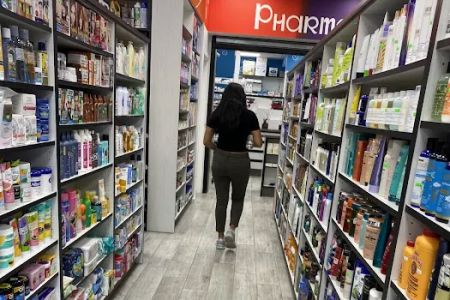Understanding Pharmacy Approaches to Pain Management
As someone who has worked closely with pharmacies and experienced the effects of chronic pain, I can tell you that managing pain is not as straightforward as it may seem. Pain can stem from many sources, including injuries, medical conditions, or even emotional stress. Over the years, I’ve seen how pharmacy professionals play a crucial role in managing pain through various approaches and treatments. Pharmacy care in pain management is a broad field, involving not just medication but also preventive care, education, and holistic support for those suffering from pain.
1. The Role of Pharmacists in Pain Management
Pharmacists are often the first healthcare professionals people turn to for pain management advice. Whether you're seeking over-the-counter pain relievers or prescription medications, pharmacists are trained to provide guidance on how to safely and effectively use these medications. As I’ve learned from my experiences, pharmacists do more than just dispense prescriptions—they also assess patient needs, provide education, and offer alternatives to traditional pain relief options.
In my own experience, I’ve seen how pharmacists can collaborate with physicians to adjust medication regimens and avoid harmful drug interactions. For example, when I was dealing with post-surgery pain, my pharmacist worked closely with my doctor to recommend the best combination of medications that would minimize side effects while still providing effective pain relief. This personalized care is one of the main reasons I value the pharmacy approach to pain management.
2. Pharmacological Approaches to Pain Relief
Pharmacological approaches to pain management are perhaps the most well-known, as they involve the use of medications to alleviate pain. These medications can range from over-the-counter options like ibuprofen and acetaminophen to prescription drugs like opioids or more specialized treatments like antidepressants and anticonvulsants. As I’ve experienced firsthand, choosing the right medication is essential in managing pain effectively while minimizing the risk of dependence or side effects.
- Over-the-Counter Medications: For mild to moderate pain, over-the-counter options like ibuprofen (Advil) or acetaminophen (Tylenol) are often recommended. These medications are usually the first step in pain management. I’ve used them in the past for headaches or muscle soreness and found them to be effective.
- Prescription Medications: For more severe pain, such as chronic pain from conditions like arthritis or cancer, prescription medications may be necessary. Opioids like oxycodone or morphine are sometimes prescribed, but they come with a risk of addiction, which is why I always appreciate the careful monitoring and guidance pharmacists provide when these are prescribed.
- Antidepressants and Anticonvulsants: Interestingly, medications like certain antidepressants (e.g., amitriptyline) and anticonvulsants (e.g., gabapentin) are often used to treat nerve pain. I found this approach to be particularly effective in managing neuropathic pain after an injury, as these medications help to alter the way pain signals are processed in the nervous system.
- Topical Treatments: For localized pain, pharmacists often recommend topical treatments like lidocaine patches or creams. I’ve used these for knee pain and found them to provide targeted relief without the need for oral medications.
3. Non-Pharmacological Approaches to Pain Management
While medications are a major part of pain management, I’ve learned that they are often more effective when used in conjunction with non-pharmacological methods. Pharmacies, especially those with an integrated approach, often recommend physical therapy, hot/cold therapies, and lifestyle modifications to enhance pain relief. In my experience, combining medications with these non-drug approaches has significantly improved my ability to manage pain without relying solely on prescriptions.
- Physical Therapy: After experiencing an injury, I was referred to a physical therapist who worked closely with my pharmacist to design a plan that included strengthening exercises and stretching. This combination of physical therapy and medication helped me recover more quickly and manage pain in the long term.
- Hot and Cold Therapy: Applying heat or ice to an injured area is one of the simplest yet most effective ways to reduce pain. Pharmacists often recommend this in addition to medication. I personally use ice packs after a workout to reduce muscle inflammation, and it’s been incredibly helpful.
- Mind-Body Techniques: Pharmacists also suggest mind-body practices like meditation or cognitive-behavioral therapy (CBT) for patients dealing with chronic pain. These methods can help reduce the emotional burden of pain and improve coping mechanisms. I found mindfulness practices, such as deep breathing, to be extremely helpful when dealing with stress-induced pain.
4. Education and Counseling in Pain Management
What I’ve come to appreciate about pharmacy approaches to pain management is the emphasis on education and counseling. Pharmacists don’t just hand out medications—they take the time to educate patients about proper usage, potential side effects, and safe practices. I’ve been given guidance on how to avoid medication misuse, how to monitor my own pain levels, and when to reach out for professional help if my pain becomes unmanageable.
Pharmacists are also key in helping patients understand the importance of setting realistic pain management goals. For example, when I first started dealing with chronic pain, my pharmacist helped me set a goal of managing my pain to a level where I could still function day-to-day without relying heavily on medication. This holistic approach to pain management—focusing not just on symptom relief but also on improving quality of life—was incredibly valuable to me.
5. The Role of Pharmacies in Combating Opioid Addiction
In recent years, there’s been growing awareness of the opioid crisis, and pharmacists have become crucial players in combating opioid misuse. I’ve seen firsthand how pharmacists are trained to recognize signs of opioid misuse and are empowered to intervene when necessary. They play an essential role in ensuring that patients who are prescribed opioids receive them in a safe, responsible manner.
Pharmacists are often involved in the development of opioid stewardship programs, which aim to reduce the misuse of opioids while ensuring that those in need of pain relief can still receive appropriate treatment. Through regular check-ins, counseling, and monitoring, pharmacies help prevent addiction while promoting safer, more effective pain management strategies.
6. The Future of Pharmacy Approaches to Pain Management
Looking ahead, I’m excited to see how pharmacy approaches to pain management will continue to evolve. With the rise of personalized medicine, I anticipate that pharmacists will play an even greater role in tailoring pain management regimens based on a patient’s unique genetic makeup, lifestyle, and health history. Additionally, advances in technology, such as telepharmacy services, will make it even easier for patients to access pain management care remotely.
As more research is conducted into alternative pain management therapies, I’m hopeful that new, innovative approaches will emerge, giving patients even more options to manage pain effectively. With the dedication and expertise of pharmacists, I’m confident that we’re moving toward a future where pain is managed in a way that minimizes risks and maximizes quality of life.














